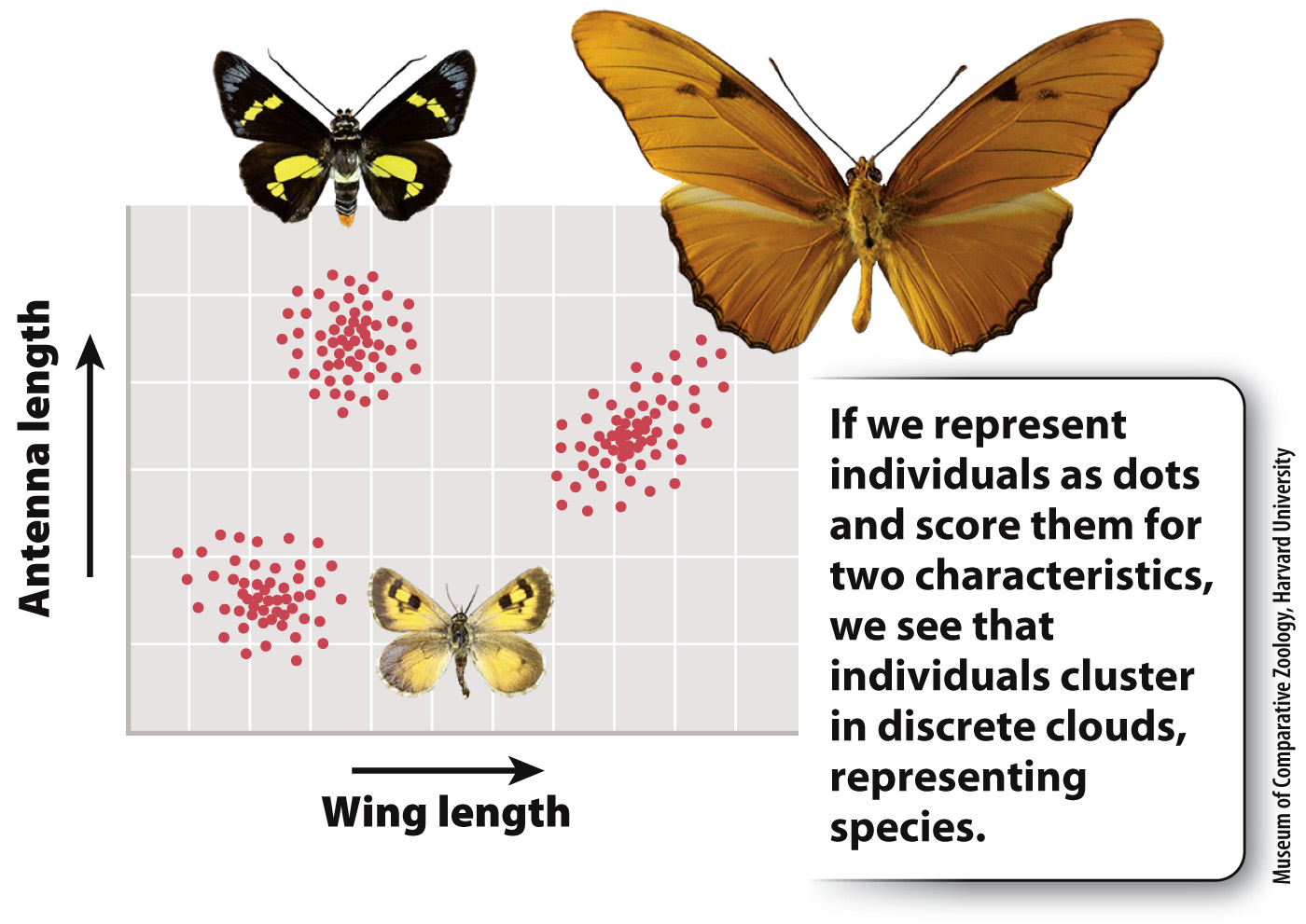Species are reproductively isolated from other species.
We can plainly see biodiversity, but are what we call “species” real biological entities? Or was the term coined by biologists to simplify their description of the natural world? To test whether or not species are real, we can examine the natural world, measure some characteristic of the different living organisms we see, and then plot these measurements on a graph. Fig. 22.1 shows such a plot, graphing antenna length and wing length of three different types of butterfly. Note that the dots, representing individual organisms, fall into non-

The distances we see between the dots within a cluster reflect variation from one individual to the next within a species (Chapter 21). Humans are highly variable, but overall we are more similar to one another than to our most humanlike relative, the chimpanzee. We form a messy cluster, but that cluster does not overlap with the chimpanzee cluster.
Species, then, are real biological entities, not just a convenient way to group organisms. Whether or not two individuals are members of the same species is not a matter of judgment, but rather a reflection of their ability (or inability) to exchange genetic material by producing fertile offspring. Consider a new advantageous mutation that appears initially in a single individual. That individual and its offspring inheriting the mutation will have a competitive advantage over other members of the population, and the mutation will increase in frequency until it reaches 100%. Migration among populations causes the mutation to spread further until all individuals within the species have it. The mutation spreads within the species but, with some exceptions, cannot spread beyond it.
Therefore, a species represents a closed gene pool, with alleles being shared among members of that species but usually not with members of others. As a result, it is species that become extinct and it is species that, through genetic divergence, give rise to new species.
The definition of “species” continues to be debated to this day. The most widely used and generally accepted definition of a species is known as the biological species concept (BSC). The BSC was described by the great evolutionary biologist Ernst Mayr (1904–
Species are groups of actually or potentially interbreeding populations that are reproductively isolated from other such groups.
Let us look at this definition closely. At its heart is the idea of reproductive compatibility. Members of the same species are capable of producing offspring together, whereas members of different species are incapable of producing offspring together. In other words, members of different species are reproductively isolated from one another.
447
As Mayr and many others realized, however, reproductive compatibility entails more than just the ability to produce offspring. The offspring must be fertile and therefore capable of passing their genes on to their own offspring. For example, although a horse and a donkey, two different species, can mate to produce a mule, the mule is infertile. If a hybrid offspring is infertile, it is a genetic dead end.
Note, too, the “actually or potentially” part of Mayr’s definition. An Asian elephant living on the island of Sri Lanka and one living in nearby India are considered members of the same species, Elephas maximus, even though Sri Lankan and Indian Asian elephants never have a chance to mate with each other in nature because they are geographically separated (Fig. 22.2).
